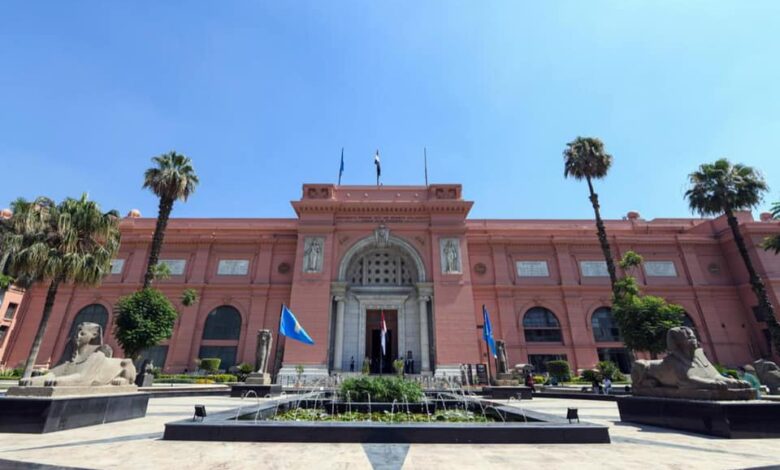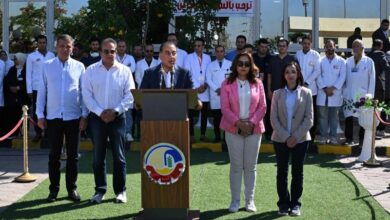
Minister of Tourism and Antiquities Ahmed Eissa inaugurated on Monday the first phase of a project to develop the Egyptian Museum in Cairo’s Tahrir Square.
The museum was upgraded via cooperation between the Ministry of Tourism and Antiquities and the European Union, with the participation of an archaeological committee comprising a number of Egyptologists at Egyptian Universities in addition to five major European museums: the Louvre Museum, the British Museum, the Egyptian Museum in Turin, the Museum of Berlin, and the National Museum of Antiquities in Leiden, the Netherlands.
The opening ceremony was attended by Head of the European Union Delegation to Egypt Christian Berger and ambassadors of the countries whose museums are taking part in the project, including France, the UK and Italy.
During a speech he delivered at the ceremony, Eissa welcomed guests at the Egyptian Museum, which he said is the oldest museum that houses Egyptian antiquities across the world and an icon of the ancient Egyptian civilization over the past 120 years.
The announcement of completing the first phase of the Cairo Museum’s development project is a message to the whole world that the Egyptian Museum in Tahrir Square is still developing itself in a way that enables it to compete with the rest of major modern museums, such as the National Museum of Egyptian Civilization and the Grand Egyptian Museum, the minister said.
The Cairo Museum continues to perform its role and mission as an ancient cultural, educational and civilizational edifice, the tourism minister said, noting that the Egyptian Museum in Tahrir has always been one of the most important museums in the world.
The museum is a destination for Egyptian visitors, tourists, and antiquity lovers from all countries of the world, Eissa added.
It is also the oldest existing Egyptian institution for preserving Egyptian antiquities since its inauguration in 1902. Its rich and unique archaeological collections are considered an essential, indispensable reference for all students of Egyptology and lovers of the Egyptian civilization, he noted.
The minister said the opening of this phase of the project is a model of distinguished cooperation between Egypt and the European Union, pointing out that the project has been carried out with the participation of an Egyptian archaeological committee, a working team from the Egyptian Museum in Tahrir, in addition to a consortium of five major European museums: the Louvre Museum, the British Museum, the Egyptian Museum in Turin, the Museum of Berlin, and the National Museum of Antiquities in Leiden, the Netherlands.
This cooperation aims to develop a new strategic vision for the Egyptian Museum in Tahrir as well as to upgrade its display system for archaeological collections; in accordance with relevant international standards and in a way that qualifies it to receive the largest possible number of visitors and tourists, he added.
Eissa expressed thanks to former minister of tourism and antiquities Khaled el Anani for his efforts during his tenure.
He also thanked the working team from the five museums and the Egyptian side for their efforts to ensure the success of such a key phase in the museum’s development project.
The minister noted that the Egyptian Museum in Tahrir has not yet revealed all its secrets; as its storerooms still contain tens of thousands of artifacts that are waiting to be rediscovered and displayed to the public in a way that shows their beauty.




